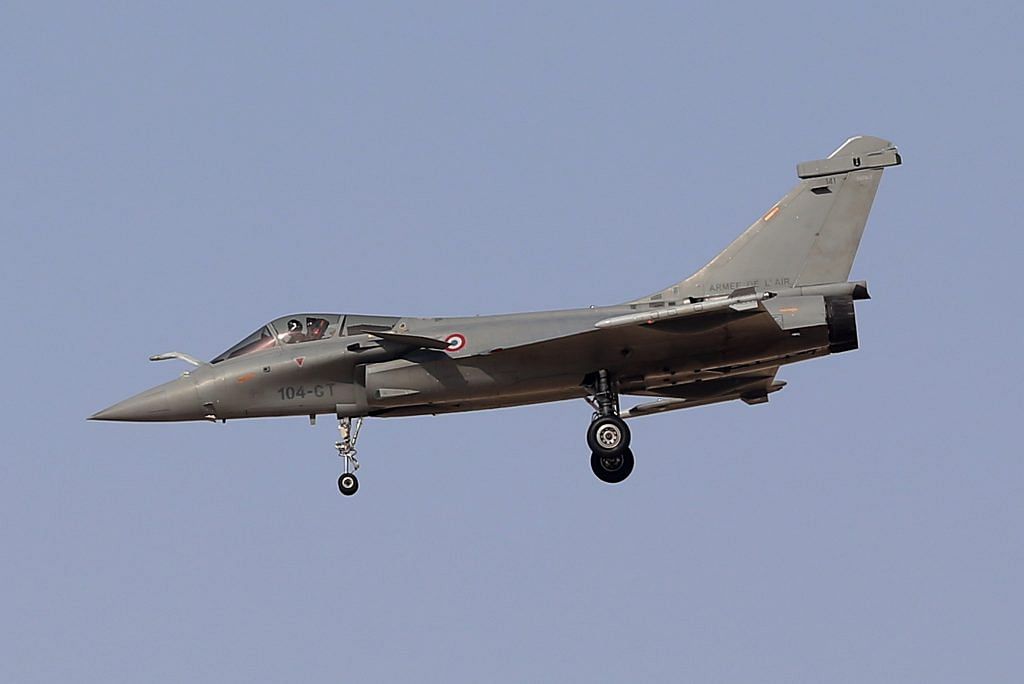Indian Air Force hit by ageing fleet, low serviceability & slow pace of upgradation by HAL. IAF fears it could end up with just 19 squadrons by 2042.
New Delhi: Hemmed in by an ageing fleet of fighter aircraft, low serviceability and a cautious bureaucracy and political leadership, the Indian Air Force is staring at an alarming fall in its muscle.
To make matters worse, even as one squadron after another of the MiG-21s and -27s continue to be phased out, the IAF is being stymied by the slow progress of upgradation work on its existing fleet of Jaguars and Mirage aircraft by state-owned Hindustan Aeronautics Limited (HAL).
The situation is so bleak that according IAF projections, even if all existing orders for 36 Rafale, six squadrons of Tejas (including Tejas Mark 1A) and two more squadrons of Su30 MKI are taken into account, the squadron strength will reduce to 27 by 2032 and a mere 19 by 2042.
The IAF has a squadron strength of 30 at present.
Target won’t be met even if all goes to plan
Even in the best case scenario, sources said, the IAF will not reach its sanctioned strength of 42 squadrons by 2042. That is if the force takes into account the Tejas Mark 2, the indigenous Advanced Medium Combat Aircraft (AMCA) and 114 fighter aircraft for which a Request For Proposal (RFP) is still awaited.
The sources said that even if one assumes that all the three futuristic aircraft are inducted as planned, the squadron strength will still only be 37 by 2042. The last time the IAF had 42 squadrons was way back in 2002.
Another concern is the low serviceability of the fighter aircraft. While it is a fact that during Exercise Gagan Shakti last year, the IAF managed to get some impressive numbers, the figures at other times are abysmally poor.
For example, the serviceability ratio of the country’s frontline fighter aircraft is only around 58 per cent. This means that if there are 100 aircraft, only 58 are available for flying at a time with the others in service and maintenance.
This has been a major concern and hence the deal for the 36 Rafale fighter jets comes with a performance-based logistics pact, under which at least 75 per cent of the Rafale aircraft will have to be available for flying at any point of time.
Also read: India pulls off big feat as indigenous combat helicopter decimates target in air
The HAL delays
A major troubling aspect is the series of delays by HAL when it comes to its upgradation programmes for the force. The IAF had even written to the government last year detailing the delays.
For instance, HAL was tasked with upgrading 47 Mirage 2000 aircraft, tasked with delivery of nuclear payload, on 29 July, 2011, at a cost of Rs 2,020 crore. The final operating capability (FOC) was scheduled to be completed by July 2017 but was it completed only by March 2018. HAL has revised the contracted production schedule thrice.
So far, HAL has upgraded only six aircraft against a contracted schedule of 21 aircraft, the IAF note says.
It is a similar story with the Jaguar Darin-III upgrade. In December 2009, HAL was handed the contract for upgrade of 61 deep penetration strike Jaguar Darin-I aircraft to Darin-III standard at a cost of Rs 3,113 crore.
The completion date of development activities and series upgrade of all 61 aircraft was December 2017. So far, however, no aircraft has been delivered to the IAF. The series upgrade is now expected to be completed by 2023-24, a delay of six years, the IAF has said.
Another concern is the go-slow approach when it comes to the RFP for the 114 fighter aircraft, especially in the wake of the Rafale contract controversy.
Following the signing of the deal for 36 Rafales, the government and the IAF were working on bringing out a tender for single-engine fighter aircraft, keeping the cost in mind.
The defence ministry, however, sprang a surprise by questioning the need for a single-engine foreign fighter when the indigenous LCA programme was on. This caused the IAF to retune itself and bring out an RFP in April, which did not limit it to single-engine fighters.
Industry experts wonder how this will play out, because one of the primary factors for the selection of aircraft will be cost, besides technical parameters.
Also read: ‘Romeo’ is just the first of hundreds of helicopters Indian military desperately needs
